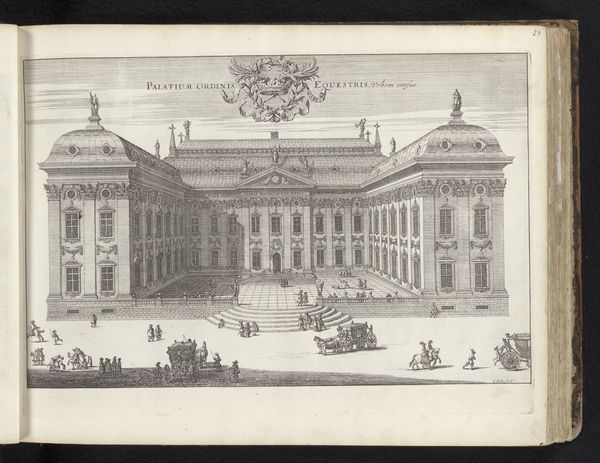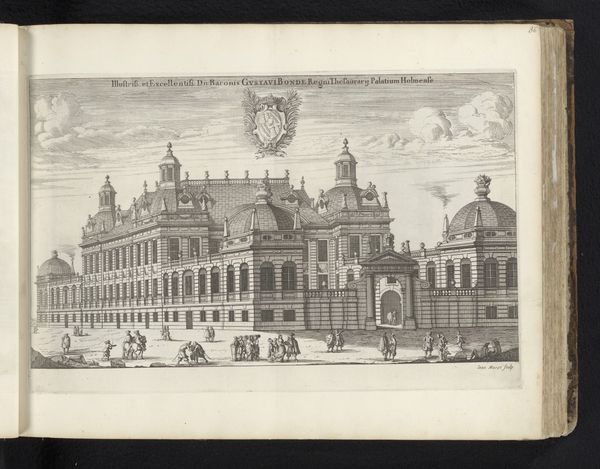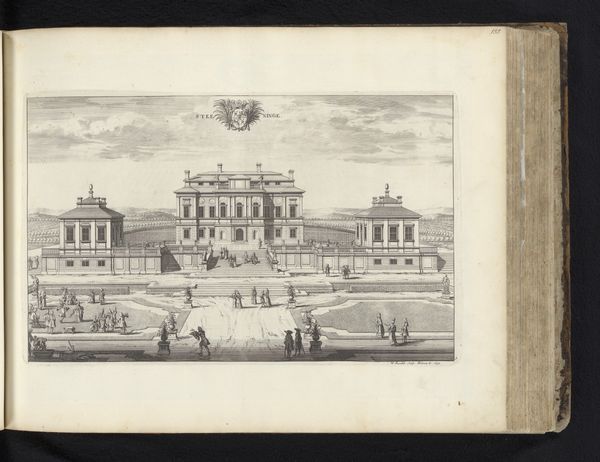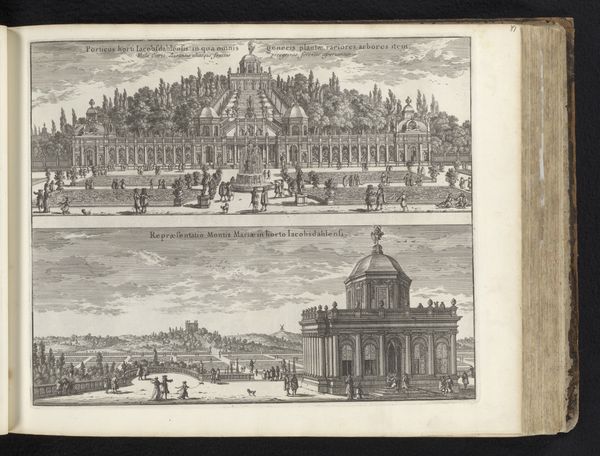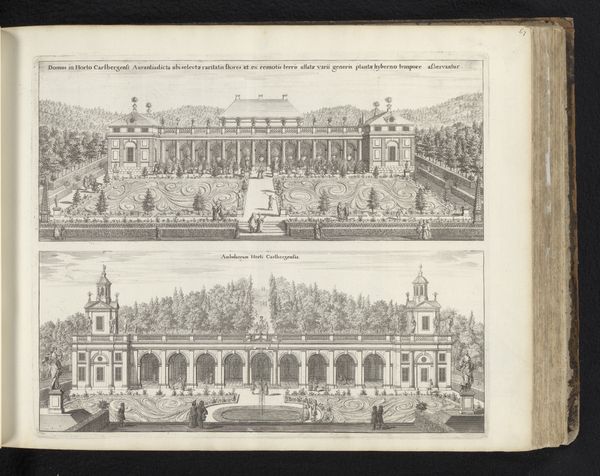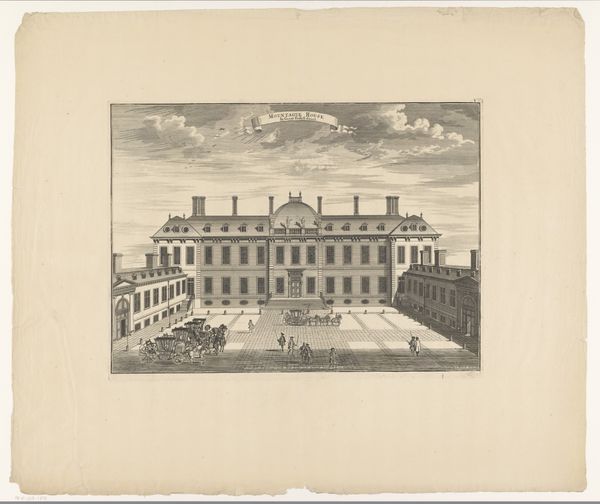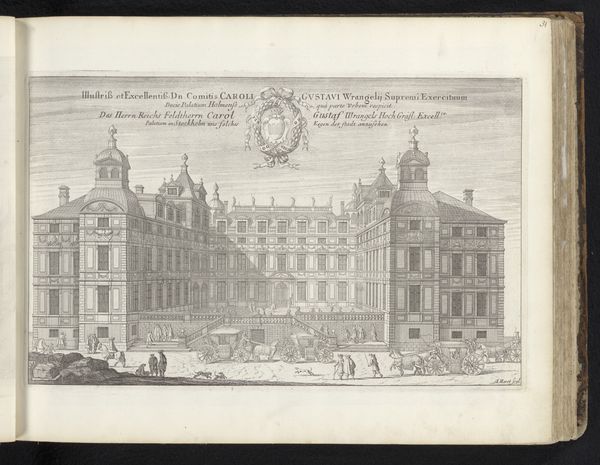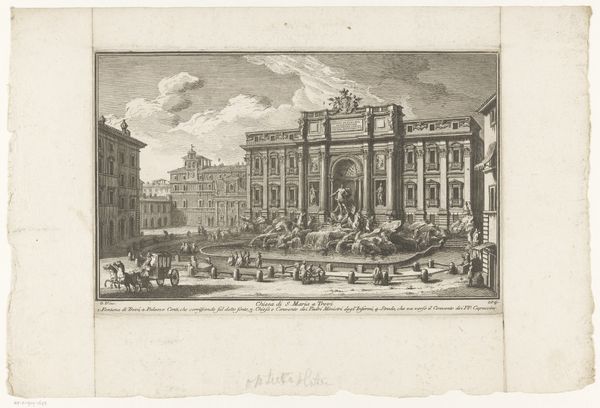
Dimensions: height 244 mm, width 375 mm
Copyright: Rijks Museum: Open Domain
Curator: This detailed print captures "Gezicht op het Bondepaleis, te Stockholm," dating back to before 1971, and credited to Jean Marot. It renders a cityscape in precise, elegant lines. What’s your initial take on this piece? Editor: Striking formality! The rigorous symmetry, the calculated recession into the distance – it’s all very controlled and ordered. The density of line suggests a strong sense of architectural grandeur. Curator: Indeed. It is an engraving, relying on ink applied to paper. Consider the sheer labor involved in producing such a work. Each line meticulously carved to replicate the building, implying a slower form of media when conveying news, trade, and cultural diffusion. Editor: And look at the use of line itself! Notice how Marot varies the thickness and density to create a sense of light and shadow, giving volume to the architecture and differentiating between the various planes. It adheres quite nicely to the Baroque period aesthetics! Curator: Baroque indeed. Consider what buildings and civic spaces like these communicate. The Bondepalais, here captured, becomes not just a structure but a stage for social interaction, public ceremony, and, of course, economic transactions. We see figures populating the courtyard; notice how that enlivens the image and provides insight into city life. Editor: That’s true. There’s an interesting interplay here between the rigidity of the architecture and the organic flow of people. Note also the strategic placement of the coat of arms above the building! Curator: I am thinking of this print's availability and dissemination across the globe and centuries, reaching countless homes in vastly different global conditions than when produced! Editor: I agree, that adds another layer to consider: how has the work accrued significance and resonance over time? It's not merely a document of a place, but a study in how lines create form. Curator: Ultimately, for me, it underscores the cultural values embedded in material production and accessibility of an art form, thus connecting its creation to labor, dissemination, and potential uses across diverse societies. Editor: And I think that's a wonderful entry point into understanding not only its historical significance but the timeless qualities of visual harmony that reside within.
Comments
No comments
Be the first to comment and join the conversation on the ultimate creative platform.
